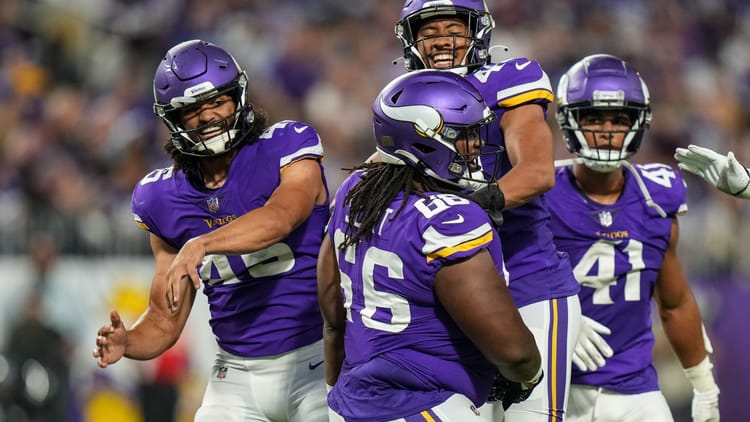Troy Dye’s Opportunity

Since breaking into the NFL in 2020, Troy Dye has been a mild disappointment.
Minnesota chose the Oregon linebacker in the fourth round of the 2020 draft. At the time, Anthony Barr and Eric Kendricks were the clear-cut top two players in the linebacker room. Due to injury, Dye was able to start five games as a rookie and one during his sophomore season. Otherwise, Dye’s main contributions have been on special teams, where his speed and length are noticeable.
The hope, though, was (and still is) that Dye could be a modern NFL linebacker, someone who is tasked with taking on RBs and TEs on passing downs. So far, that hope hasn’t materialized.
PFF actually had a second-round grade on Dye, largely due to the linebacker’s abilities in pass coverage:
Dye played over 700 defensive snaps in all four of his seasons at Oregon. He racked up 397 total tackles, serving as a constant and a key cog in their defense over his career in Eugene. That career began with a 67.1 overall grade from Dye as a freshman, but he quickly bumped that up to 81.1 in 2017, flashing ability as a run defender (82.4 run-defense grade) and in coverage (79.2 coverage grade). That coverage ability is something that he has shown each year at Oregon, with four-straight coverage grades of 70.0 or better. The ability to man up with tight ends and limit production over the middle of the field is more important now than ever at the linebacker position, and it’s an ability that Dye has shown. The Ducks used Dye more as a pass rusher in 2019, and he delivered with 26 pressures in 107 pass-rushing snaps.
One has to hope that Ed Donatell’s arrival means a fresh start for the young linebacker. Indeed, Troy Dye may get the chance to show that he’s a capable contributor in the NFL.
Donatell’s preferred coverage intentionally leaves the flats open. Corners carry receivers down the field, so offenses regularly try to exploit the large patch of green grass in the short area of the field. Linebackers are thus tasked with getting to the sideline before a pass catcher can turn a short gain into a long one. One has to think that Dye is well-suited to fulfilling this responsibility, perhaps even more than Jordan Hicks. It wouldn’t be surprising to see Dye replace Hicks on 3rd and long.
In the above video, you’ll see Troy Dye – number 45 – needing to read and react to what is occurring in front of him. He steps up for the run before shuffling toward the sideline as he keeps his eye on the QB, indicating he’s in zone. He makes a break toward the RB in the flats in anticipation of a pass before getting depth in his own zone. His presence helps prompt Jared Goff to hold onto the football for a touch longer. In so doing, Dye helps allow his pass rush to get home for the sack.
The abilities you see in the above video will translate well to the Donatell defense (which you can read about on Purple PTSD).
Quite often, a young player struggles when they aren’t being put in a position to succeed. This isn’t an ironclad truth but, rather, a general observation that helps explain why some promising players can struggle. One wonders if his abilities will be able to shine in a different defensive system, one where his speed/length combo may be put to better use. If that’s the case, then Troy Dye may be a pleasant surprise in 2022, a player who helps this defense fulfill its potential.
[brid autoplay=”true” video=”1018055″ player=”26281″ title=”Where%20Kirk%20Cousins%20Ranks%20among%20NFL%20QBs” duration=”1292″ description=”Dustin Baker discusses Kirk Cousins’ ranking in the QB pecking order.” uploaddate=”2022-05-23″ thumbnailurl=”https://cdn.brid.tv/live/partners/19439/snapshot/1018055_th_1653332629.jpg” contentUrl=”//cdn.brid.tv/live/partners/19439/sd/1018055.mp4″ width=”16″ height=”9″]

